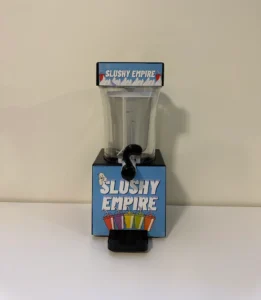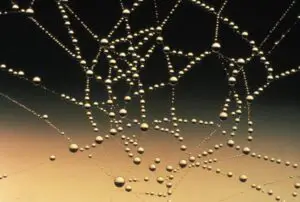The largemouth bass, native to the eastern and central United States, southeastern Canada, and northern Mexico, is a highly adaptable freshwater fish that thrives in various environments.
With their olive-green color, prominent lower jaw, and sharp-spined dorsal fin, these opportunistic predators are sought after by anglers for their fighting ability.
In this article, we will explore the preferred habitat and distribution of largemouth bass, as well as provide fishing tips to help enthusiasts catch trophy-sized bass.
Table of Contents
Preferred Habitat for Largemouth Bass
Largemouth bass prefer areas with vegetation and cover for hunting, such as lakes, ponds, rivers, and reservoirs. These fishing locations provide the bass with the ideal conditions to hide and ambush their prey.
Bass behavior revolves around their need for cover, as they use it to stay hidden from predators and sneak up on their unsuspecting prey. The presence of vegetation, such as aquatic plants and submerged logs, offers the bass protection and a place to lurk before they strike.
Additionally, bass are known to gather near structures like fallen trees, submerged rocks, and docks, as these provide additional hiding spots. Understanding these preferred habitats and bass behavior can greatly increase the chances of a successful fishing trip.
Geographic Distribution of Largemouth Bass
Found in freshwater environments, the largemouth bass can be spotted in lakes, ponds, rivers, and reservoirs across the eastern and central United States, southeastern Canada, and northern Mexico. This species has a wide geographic range, occupying a large portion of North America.
Largemouth bass have specific habitat preferences, often found in areas with vegetation and cover for hunting. They are adaptable and can tolerate a variety of water conditions.
Largemouth bass are known for their olive-green coloration with a dark lateral line and a prominent lower jaw that extends beyond the back of the eye. They can reach an average length of 12-16 inches but can grow up to 2 feet in length and weigh anywhere from 1 to over 20 pounds.
Fishing Techniques for Largemouth Bass
Anglers often use a variety of techniques, such as casting and flipping, to target and catch largemouth bass. These techniques can help increase the chances of a successful fishing trip. Here are three bass fishing techniques that anglers commonly use:
Topwater Lures: Anglers use topwater lures to imitate prey that is on or near the water’s surface. These lures create a commotion on the water, attracting the attention of largemouth bass. Anglers can use different types of topwater lures, such as poppers, buzz baits, and frogs, to entice the bass to strike.
Casting: Casting is a technique where the angler throws the bait or lure at a specific target area. This technique allows the angler to cover a larger area and increases the chances of attracting a largemouth bass. By accurately placing the bait or lure near vegetation or other cover, anglers can entice the bass to strike.
Flipping: Flipping is a technique where the angler uses a short casting motion to place the bait or lure in a specific target area. This technique is commonly used when fishing in heavy vegetation or cover. By flipping the bait into pockets or openings in the vegetation, anglers can reach areas where largemouth bass are likely to be hiding.
Seasonal Patterns and Behavior of Largemouth Bass
During the summer months, largemouth bass tend to seek out cooler, deeper water to escape the heat. This behavior is influenced by their need for optimal spawning conditions.
Largemouth bass typically spawn during the spring when water temperatures reach around 60-70°F. Males build nests in shallow water, using their tails to create depressions, and females lay eggs in these nests. The eggs hatch in 2-7 days, depending on water temperature.
Throughout the year, largemouth bass exhibit a varied diet. Juveniles feed on small bait, shrimp, and insects, while adults consume a range of prey, including snails, crayfish, and even snakes. They are opportunistic predators that ambush their prey, often feeding during low light conditions and in areas with cover.
Understanding the seasonal patterns and feeding habits of largemouth bass can greatly improve angler success and contribute to the conservation of this popular gamefish.
Lure Selection and Presentation for Largemouth Bass
Optimal lure selection and presentation techniques greatly enhance an angler’s chances of attracting and enticing largemouth bass to strike. When targeting largemouth bass, there are certain topwater baits that have proven to be effective.
These include buzz baits, poppers, and frogs. The buzzing sound and surface disturbance created by buzz baits can mimic the movement of prey, attracting the attention of nearby bass.
Poppers, on the other hand, imitate injured baitfish, creating a commotion that triggers a predatory response. Frogs are also popular topwater baits, as they resemble a natural food source for bass.
Additionally, jigging techniques can be highly successful when targeting largemouth bass. By using a jig with a soft plastic trailer, anglers can mimic the movement of a wounded baitfish, making it irresistible to bass.
These techniques, when employed correctly, can greatly increase an angler’s success in catching largemouth bass.
Tips for Catching Trophy Largemouth Bass
When targeting trophy largemouth bass, it’s important to focus on areas with submerged structures and deep water. These areas provide the perfect habitat for trophy bass to hide and ambush their prey.
Some of the best fishing spots for trophy largemouth bass are found in lakes and reservoirs with plenty of submerged vegetation, such as lily pads and submerged grass beds. These spots offer both cover and an abundant food source for the bass.
The best bait for largemouth bass can vary depending on the time of year and the specific conditions of the fishing spot. However, popular choices include plastic worms, spinnerbaits, and topwater lures. It’s also important to consider the size and color of the bait, as well as the presentation technique, to increase your chances of success in catching trophy largemouth bass.
Also Read
Call of the Wild the Angler Fish Locations – Best Fishing Spots
Call of the Wild the Angler Tips & Tricks – Expert Tips and Techniques


















































